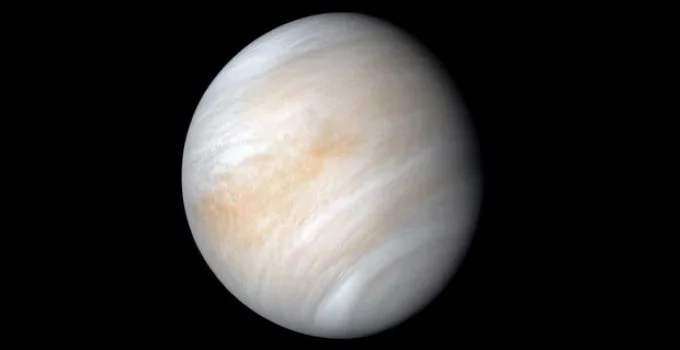Is Venus Bigger Than Earth?
No, Venus is not bigger than Earth—but it’s very close! In fact, Venus is often called Earth’s twin because the two planets are almost the same size, mass, and composition. While Earth is just a little larger, the differences between the two go far beyond size.
Let’s compare Venus and Earth to see how similar they are—and how different they’ve become over time.
🔎 Dive Deeper
- 📏 Size Comparison: Venus vs. Earth
- ⚖️ Mass and Gravity Differences
- 🌋 Why Venus Is So Different from Earth
- 🌎 Earth’s Twin or Total Opposite?
- 🎯 Final Thoughts
- 📚 References
📏 Size Comparison: Venus vs. Earth
Venus is the second planet from the Sun, right next to Earth. Their sizes are surprisingly close, but Earth is slightly bigger in every way.
| Feature | Earth | Venus |
|---|---|---|
| Diameter | 12,742 km (7,918 mi) | 12,104 km (7,521 mi) |
| Surface Area | 510 million km² | 460 million km² |
| Volume | 1 trillion km³ | 928 billion km³ |
📏 Venus is about 95% the size of Earth, which makes it the most Earth-like planet in terms of shape and structure.
🌐 If Earth were the size of a basketball, Venus would be a little smaller than a volleyball.
⚖️ Mass and Gravity Differences
Even though Venus is nearly the same size as Earth, it’s a little less massive. That means it has less gravity on its surface.
| Measurement | Earth | Venus |
|---|---|---|
| Mass | 5.97 × 10²⁴ kg | 4.87 × 10²⁴ kg |
| Gravity | 9.8 m/s² | 8.87 m/s² |
🧲 On Venus, you would weigh about 90% of your Earth weight. For example, if you weigh 100 pounds on Earth, you’d weigh about 90 pounds on Venus.
But don’t get too excited—Venus’s surface is still one of the least friendly places to stand in the solar system (as we’ll explain below).
🌋 Why Venus Is So Different from Earth
Even though Earth and Venus are nearly the same size, they are very different in every other way:
| Feature | Earth | Venus |
|---|---|---|
| Atmosphere | Nitrogen & oxygen | Thick carbon dioxide & sulfuric acid |
| Temperature | Averages 59°F (15°C) | Averages 860°F (460°C) |
| Surface | Oceans, continents, life | Volcanoes, dry plains, no water |
| Rotation | Spins forward, 24-hour day | Spins backward, day lasts 243 Earth days |
| Magnetic Field | Strong and protective | Weak to none |
🔥 Venus’s thick atmosphere traps heat in a runaway greenhouse effect, making it the hottest planet in the solar system, even hotter than Mercury, which is closer to the Sun.
🌎 Earth’s Twin or Total Opposite?
Venus is often called Earth’s “sister” or “twin” planet because:
- It’s close in size and mass
- It has a similar rocky composition
- It orbits near Earth in the solar system
But despite these similarities, Venus and Earth are more like opposites:
- Earth is cool, wet, and full of life.
- Venus is hot, dry, and toxic.
🔭 Scientists believe Venus may have once had oceans and a more Earth-like climate, but it changed over billions of years. Studying Venus may help us learn how climate change can reshape a planet.
| 🌡️ Fun Fact | A day on Venus (243 Earth days) is longer than its year (225 Earth days)! |
🎯 Final Thoughts
So, is Venus bigger than Earth? No—Venus is slightly smaller in diameter, mass, and volume. But the two planets are very close in size, which is why Venus is often called Earth’s “twin.” However, that’s where the similarities end. Venus has a hellish atmosphere, extreme heat, and no life as we know it.
Understanding Venus helps scientists learn how planets form, evolve, and even go wrong. It’s a cautionary tale of how size isn’t everything—what’s on the inside and outside of a planet truly matters.
📚 References
- NASA Solar System Exploration. “Venus vs. Earth.” https://solarsystem.nasa.gov/planets/venus/overview
- European Space Agency (ESA). “Venus Express Science.” https://www.esa.int
- The Planetary Society. “Comparing Earth and Venus.” https://www.planetary.org
- Space.com. “Venus: The Planet Closest to Earth’s Size.” https://www.space.com/venus-earth-twin
- National Geographic Kids. “Planet Venus Facts.” https://kids.nationalgeographic.com
